

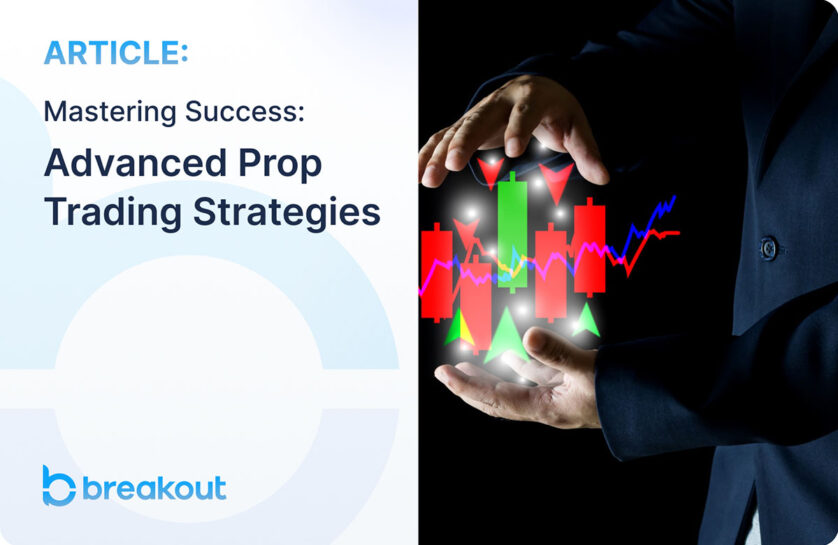
One popular strategy favored by traders is pair trading, wherein a long position is matched with a short position in another asset
The crypto market is heavily subject to the news effect, meaning trades can be made based on the way assets react to relevant news stories or announcements
The open, transparent nature of blockchain allows for unfettered access to huge volumes of data arising from crypto usage
To thrive in the domain of proprietary trading, especially within crypto prop trading, mastering an arsenal of advanced prop trading strategies is crucial. This comprehensive exploration is aimed at delineating a range of strategies that are pivotal in elevating both burgeoning and seasoned prop traders to notable heights in their trading pursuits.
Proprietary trading, more commonly known as prop trading, entails a unique arrangement where traders perform transactions using capital from a proprietary trading firm. This setup significantly reduces the necessity for traders to leverage their own capital, presenting a substantial advantage. It grants them access to vast capital reserves, potentially magnifying the efficacy and profitability of their trades. Prop trading firms are instrumental in this process, providing not only financial support but also a platform for traders to deploy a wide array of trading strategies, utilizing advanced trading technology to engage with financial markets more powerfully.
The array of strategies available to prop traders is just as varied and rich as those accessible to traders operating with personal funds. Prop trading is bolstered by advanced trading technologies and an arsenal of strategies, all designed to maximize profits and adeptly navigate the financial markets. These strategies are pivotal in balancing the pursuit of profit with the imperative of effective risk management, especially in the face of the inherent volatility that characterizes financial markets, including the crypto sector.
The landscape of prop trading strategies offers no shortage of approaches that can provide prop traders, associated with proprietary trading firms, with valuable insights and a competitive edge. From intricate market analysis to leveraging market data and economic indicators, these strategies encompass a range of techniques aimed at maximizing profits and managing risks.

One of the key strategies in the arsenal of a prop trader is to understand and capitalize on market volatility. Market volatility, while often perceived as a risk, can be a source of significant opportunity for the astute trader. Prop traders, equipped with the right prop trading strategies and the backing of their firm, can navigate these turbulent waters to execute trades that harness this volatility to their advantage.
Additionally, a profound understanding of financial instruments is paramount. Prop traders must be adept in various aspects of trading these instruments, from discerning the right entry and exit points to executing trades that align with their strategic objectives. The ability to analyze and interpret market trends and data is an invaluable skill in this regard.
An overarching theme in prop trading is the critical role of risk management. The ability to manage risks effectively is what often separates successful traders from the rest. Proprietary trading firms usually have dedicated frameworks and risk management strategies in place, ensuring that their traders are not only focused on generating profits but are also adept at mitigating potential losses.
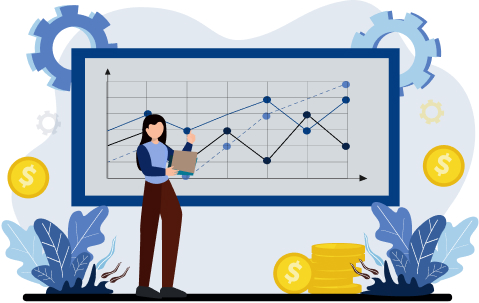
The world of proprietary trading, particularly within crypto and traditional financial markets, demands a sophisticated approach to strategy formulation and execution. For aspiring and experienced prop traders alike, the journey involves a continuous learning curve, with an emphasis on harnessing advanced trading technologies, developing keen market insights, and maintaining a steadfast focus on risk management. By mastering these elements, traders associated with proprietary trading firms can navigate the dynamic landscape of financial markets, making informed decisions that drive profitability and long-term success.

Pair trading is a strategic approach where a trader takes a long position in one asset while simultaneously taking a short position in another asset. The objective here is to capitalize on the differential in price movements between these two financial instruments. Pair trading is used to speculate on relative strength or relative weakness between two (or more) instruments whilst reducing overall directional risk to the broader market i.e. being delta neutral. Often employed by prop traders, especially in times of heightened market volatility, pair trading is perceived as a strategy with relatively lower risk.
However, it is imperative to understand that the success of pair trading hinges on the sustained correlation between the paired assets. A breakdown in this correlation can significantly impact the effectiveness of the strategy.
The Relative Strength Index (RSI) is a pivotal momentum indicator in the realm of technical analysis. It assesses the magnitude and velocity of recent price changes relative to the wider market, assisting traders in identifying assets that are potentially overvalued or undervalued.
Employing relative strength is fundamental in forecasting future price movements and offers traders critical signals for buying and selling, as well as insights into prevailing market trends. It is important to note that while RSI is a valuable tool, it should be integrated with other data and indicators to formulate robust trading strategies.
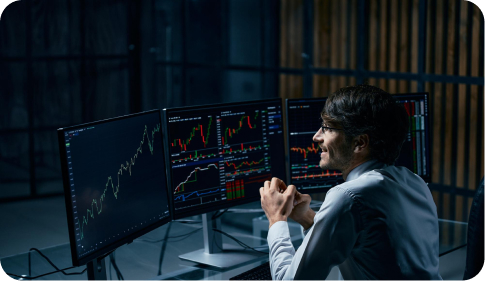
Popular RSI strategies include looking for high time frame divergence signals for market reversals as well as standard overbought/oversold signals for entries and exits.
The dynamics of financial markets, including the cryptocurrency market, are significantly influenced by the daily news cycle. Markets can swiftly respond to all sorts of events, such as interest rate shifts, inflation reports, regulatory changes, and other economic or industrial developments. Cryptocurrency markets, in particular, are highly reactive to diverse news such as regulatory updates, partnership announcements, token events, and more.
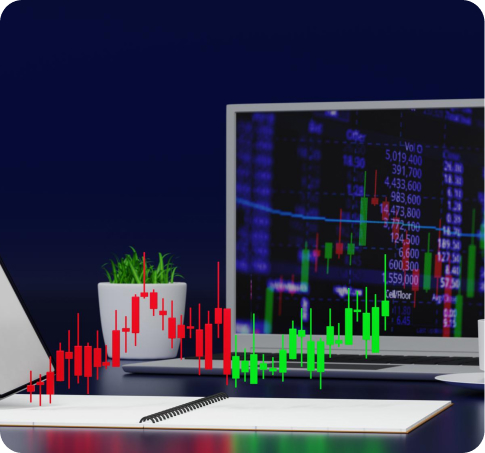
News trading emerges as a particularly appealing strategy for traders, especially those new to the field, as it doesn’t necessitate advanced technical expertise. This approach can offer the opportunity for swift and potentially lucrative gains.
However, it’s crucial to acknowledge that news-driven market sentiment is often volatile and unpredictable. Furthermore, significant news events capable of triggering major market movements are frequently anticipated and factored into market prices well ahead of the actual event.
The world of traditional financial markets operates within distinct time frames, segmented mainly across three major sessions: Tokyo, London, and New York. Understanding these sessions is vital for traders, as each offers unique opportunities and challenges. Instead of attempting to navigate the entire global market in a continuous 24-hour cycle, it’s more strategic for traders to focus on individual session windows. These windows represent not just geographical distinctions but also periods of varying market activity and liquidity.
London, known for holding the largest share of global trading activity, plays a pivotal role in the financial sector. However, the height of market volatility — and potentially, the highest profitability — often occurs during the overlapping periods of these sessions. This overlap presents prime opportunities for prop traders and financial institutions to capitalize on heightened market movements.
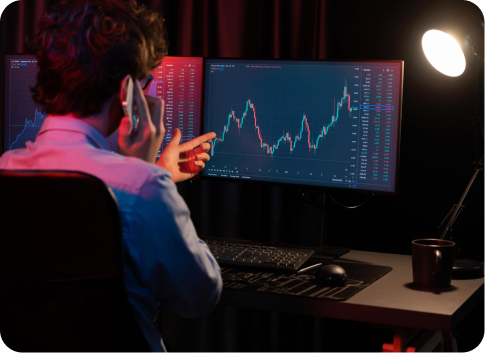
Certain trading strategies also look at average per session returns over a larger period of time and use that data to form a directional bias for trading.
While the cryptocurrency market operates continuously, adhering to no specific session, it does exhibit noticeable fluctuations in trade volume aligned with typical business hours across Asia, Europe, and the Americas. This pattern presents a unique scenario for crypto prop trading, where understanding these global market rhythms can be instrumental in executing profitable trades.
For prop traders, these session overlaps are crucial moments to execute trades that leverage the increased market volatility. These windows offer opportunities for executing a variety of prop trading strategies, ranging from volatility trading to swing trading, each designed to maximize profits from rapid price movements. Additionally, proprietary trading desks and high frequency trading firms often deploy advanced technology to capitalize on these moments, seeking to generate profits from even slight price discrepancies and rapid market movements.
In prop firm trading, employing advanced trading technology and data analytics is key. Prop traders, especially in the crypto world, have access to an array of tools providing deep insights into financial markets. These include comprehensive data on forex, stocks, and cryptocurrencies. The transparent nature of blockchain technology is a boon for crypto prop traders, granting direct access to vital market data and trends.

Websites like CoinMarketCap and CoinGecko offer basic market tracking services, but the real treasure trove of information lies in blockchain explorers. These platforms provide detailed insights into transactions, user activity, and other critical data points that inform trading decisions.
Furthermore, specialized tools like Velo and Coinalyze delve deeper, analyzing financial indicators such as funding rates, open interest changes, volume, and more. This level of detailed analysis is crucial for developing successful prop trading strategies.
Moreover, proprietary trading firms often provide their traders with direct market access, allowing them to utilize these tools and data insights effectively. This is especially beneficial for strategies that require real-time information, like news trading or statistical arbitrage.
Adept prop trading relies on using data and technology strategically to improve trading strategies. Whether they work for prop trading firms or trade on their own, prop traders need to take a comprehensive approach. This includes understanding global market sessions and making the most of the key overlaps, as well as using advanced data analytics effectively. Successful prop trading goes beyond making money – it also involves fully grasping and managing risks, which is crucial for every prop trader’s success.

Prop trading strategies, particularly in prop trading firms, are as diverse as the markets themselves. From high frequency trading, which capitalizes on rapid market movements and price discrepancies, to volatility trading that leverages market volatility, the strategies are numerous. Each requires a unique blend of insight, timing, and technological leverage, enabling prop traders to execute trades that align with both short-term objectives and long-term goals.
Furthermore, prop traders at these firms benefit from having access to a wealth of market data and financial instruments. This facilitates a more nuanced approach to trading, where understanding the right entry and exit points becomes a critical factor in executing profitable trades. In prop trading, the ability to discern these key moments in trading financial instruments can significantly enhance the success rate of the strategies employed.
Proprietary trading desks at these firms often implement sophisticated risk management strategies to safeguard their traders’ positions. Effective risk management is about striking a balance between ambitious profit targets and the prudent management of potential losses. This balance is crucial in ensuring the longevity and sustainability of a prop trader’s career.

In conclusion, the landscape of prop trading, particularly within prop trading firms, is dynamic and ever-evolving. It demands a continuous commitment to learning and adaptation. By melding market acumen, technical analysis expertise, and data-driven insights, prop traders are well-equipped to navigate the intricacies of financial markets.
Successfully managing the spectrum of financial instruments and understanding market volatility are key to executing trades that not only generate profits but also withstand the test of changing market conditions. Whether in the specialized world of proprietary trading or the broader expanse of the financial markets, the ability to devise and implement effective trading strategies is the hallmark of a skilled prop trader. This proficiency, coupled with a keen eye for risk management, paves the way for enduring success and growth in the challenging yet rewarding world of prop trading.